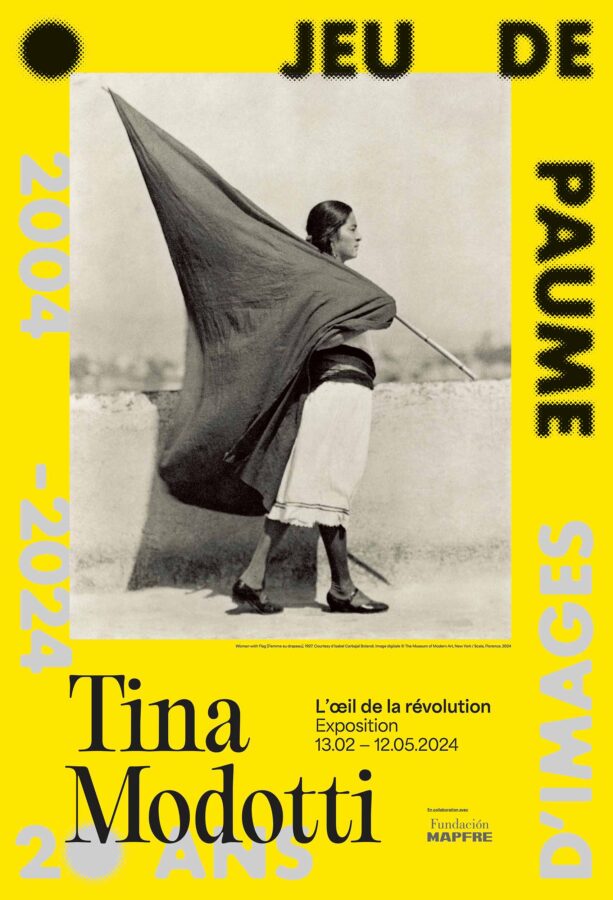
© Jeu de Paume
Exhibition
Tina Modotti
The Eye of Revolution
From 13 February to 12 May 2024
Jeu de Paume – Paris
Jeu de Paume pays tribute to Tina Modotti (1896-1942) through a major exhibition, the largest ever devoted to the photographer and political activist of Italian origin in Paris.
Tina Modotti (Udine, Italy, 1896 – Mexico City, 1942) was an active participant in some of the most important historical events of the first half of the 20th century, including the massive European economic migration to North America at the turn of the century, the birth of silent film on the West Coast of the United States, the post-revolutionary agrarian reform in Mexico, the political muralist movement, the recognition of indigenous Mexican culture, the entry of women into the public space, the struggle between Stalinists and Trotskyists after the 1917 Russian Revolution and the Spanish Civil War.
She emerged as a pioneering woman photographer during the 1920s and her influence on later Mexican photography extended from her near-contemporary Manuel Álvarez Bravo to Graciela Iturbide. Modotti learnt about photography thanks to Edward Weston, but her practice went beyond the American’s formalist approach and she quickly developed a personal vision of her own. After the economic migration that took her from Udine to San Francisco and Los Angeles, she moved to Mexico, where she became part of the “Mexican Renaissance” and its thriving post-revolutionary culture. Joining the circle of artists and mural painters, she quickly combined Weston’s formalism with “embodied photography”. Modotti joined the Mexican Communist Party (CPM) in 1927 and used her camera to denounce the plight of the poor, paying particular attention to conveying the experience of Mexican women.
After being expelled from Mexico as a communist in 1930, she spent several years in the Soviet Union, where her photographic militancy was transformed into activism. In the middle of the decade, the Soviet Communist Party sent her to Spain; after the outbreak of the Civil War, she organised the evacuation of “war children” from the country, supervising military hospitals and engaging in propaganda activities. Following the defeat of the Republicans, she crossed the Pyrenees with thousands of other exiles. Exhausted and disillusioned after the Spanish Civil War, she was forced to leave Europe again. She died in Mexico City in 1942.
Practical informations
To make your visit as comfortable as possible, our staff may ask you to wait at the entrance to the exhibition. To minimise waiting time, we advise you to book your tickets during the least crowded periods: on weekdays, between 12pm and 2pm or after 5pm. Thank you for your understanding.
